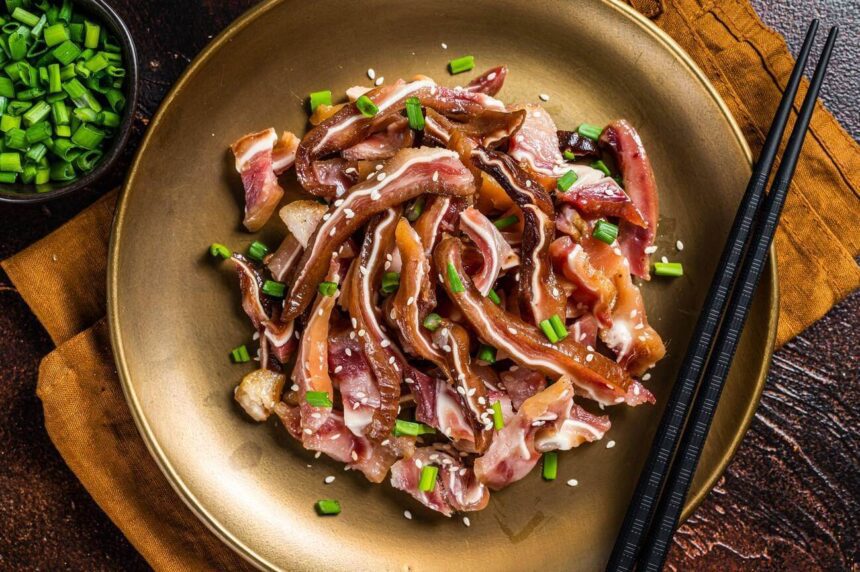So, you’ve got a finicky feline prowling around your place, and you’re wondering, “Can cats eat pig ears?” It’s a legitimate question. After all, our four-legged companions have their quirks, and their taste buds are as mysterious as the Bermuda Triangle. Let’s dive into the intriguing world of feline gastronomy and see if pig ears make the cut.
The Fussy Feline Conundrum
Cats, notorious for their discerning taste, aren’t the garbage disposals their canine counterparts tend to be. Dogs might devour everything in sight, but cats? They’re the food critics of the animal kingdom. So, do these regal creatures fancy dog treats like pig ears? Well, not exactly.
Rawhide bones, chewy pig ears, and their ilk are tailor-made for dogs. But, and it’s a big but, some cats are rebels, culinary rebels. They might show a penchant for a chew or two. Yet, hold your horses; pig ears are not the gourmet delight you’d want your feline connoisseur to savor.
Can Cats Eat Pig Ears?
Let’s cut to the chase – are pig ears a safe bet for your kitty’s snack time fiesta? The resounding answer: No. Why, you ask? Two words: fat overload.
Pig ears are packed with fat, enough to throw your cat’s digestive system into disarray. Digestive issues? No one signed up for that. But wait, there’s more – pancreatitis. This nasty business can manifest as lethargy, vomiting, diarrhea, and abdominal pain, turning your furball’s day into a furry nightmare.
Salmonella – The Unwanted Party Crashers
Picture this: a bacterial shindig, and the guest of honor is none other than Salmonella. Pig ears have a reputation, and not the good kind. They often come with a side of Salmonella bacteria, a party favor no pet wants.
Governments worldwide, from Canada to the UK and the good ol’ USFDA, have issued recalls and warnings. Why? Bacterial contamination, my friend. And it’s not just your cat at risk; you’re in the danger zone too. Handling those pig ear treats or your infected pet? Salmonella’s got its eye on you.
Dogs and Cats – Treat Twins or Nutritional Enemies?
Let’s debunk a common myth – dogs and cats can’t play treat twins. Their bodies march to different drummers, each with its own nutritional needs and quirks. Feeding your cat those dog treats? Recipe for dietary disaster.
Here’s the real kicker – some dog treats play host to ingredients that are dog-safe but toxic for cats. Onions, garlic, propylene glycol, and ethylene glycol are the culprits. It’s like a canine culinary conspiracy against your feline friends.
Toxic Tango – The Nasty Four
Why on earth do dog treats contain toxic ingredients? Propylene glycol and ethylene glycol, the chemical wizards keeping those chews moist and tasty for dogs. Garlic and onions, the flavor maestros tempting canine taste buds.
But, here’s the hitch – these ingredients, though tested for dog safety, aren’t guaranteed feline-friendly. And propylene glycol, the so-called “pet safe” antifreeze, can be fatal for cats. Yup, you read that right – fatal.
What’s the Cat Chew Menu?
Enough with the don’ts, let’s talk about the do’s. What can your cat chew on without risking a gastronomic catastrophe? Dehydrated or freeze-dried meats, the safe haven for your feline’s cravings. Cat grass and catnip in tiny doses? Perfect. And for the discerning kitty, there are cat chew toys in the market. CatTwig‘s got sticks, specially crafted for the feline royalty.
Feeling adventurous? There are cat-safe dog chews out there. Look for those single-ingredient, meaty delights. Just a word of advice – scrutinize the ingredient list like a detective on a case.
Wrapping it Up – No Pig Ears, Yes to Safe Chews
In the grand saga of cat treats, pig ears are the villains. They’re the Darth Vaders of the feline galaxy, posing a risk to your cat’s digestive harmony and introducing them to the dubious Salmonella party.
For the discerning cat parent, the golden rule is simple – stick to treats designed for cats. They’re a surefire way to meet your furball’s nutritional needs without the dietary drama. And if you’re feeling adventurous in the dog treat aisle, be a label sleuth. Your cat’s well-being depends on it.
There you have it, the lowdown on the “can cats eat pig ears” saga. Keep those pig ears away, and let your cat indulge in treats tailored just for them. It’s a culinary love story that ends with a contented purr.



